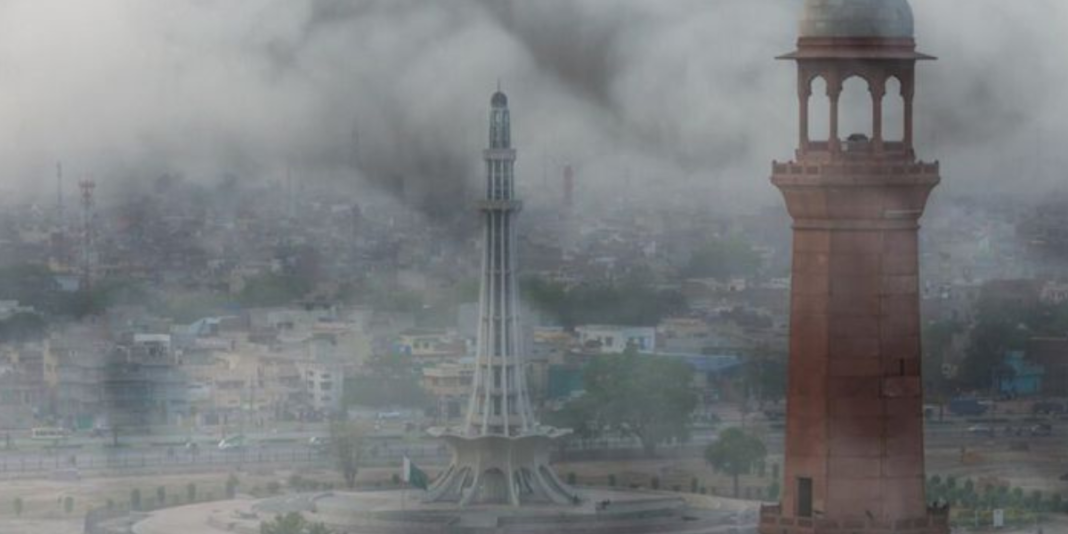Current Situation of Lahore Smog
Lahore, once a city of fresh air, is no longer a pure city in which to live. The streets that once were filled with people and parks rushed with children are no longer populated. The reason behind this sudden change is smog, which has made the air difficult to breathe, stinging resident’s eyes and burning their throats. People are forced to visit doctors and clinics to sustain themselves to live in this unhygienic environment.
A city with 14 million people is forced to stay at home even when the world is progressing so fast outside. Air purifiers are considered a solution to install at home, as they purify air from toxic particles, but not all people can afford the cost of this device.
Schools are forced to close until November 17 to protect children’s exposure to this polluted air. The morning commute is especially the main hitting time when the frequency of smog is at its highest peak. The main reason behind this rise in smog capacity is the large number of factories that are situated on the borders of Pakistan and India.
In a recent interview, Rafia Iqbal, a 38-year-old school teacher who lived on the Pakistan-India border, said that “the children are showing symptoms of allergies and are constantly coughing, which is why most children are falling sick very frequently.” Her husband, Muhammad Safdar who is 41 years old and an advertiser by profession, said that everyday lives are becoming difficult to live. We are just paralyzed in this state of situation and cannot move or go outside, and we can do nothing at all.
Low-quality fuel emissions from vehicles and factories and worsened by the agriculture stubble burning have put the blanket of harmful and toxic air of smog on the city of Lahore together and the situation is even made worse by the cooler temperature and non-moving winds.
Lung cancer, heart disease, strokes, and other respiratory infections are commonly the byproducts of this air pollution, said the WHO. The rise in the Lahore smog level is causing more harm to children, babies, and elderly people.
Last year, the government took the step to eliminate smog from the city and conducted artificial rain, and this year it sprayed the streets with trucks of water artillery, but all resulted in zero outcomes. On Tuesday, 900 people were admitted as a result of smog-causing diseases, and special smog clinics have been established across Punjab province to treat patients effectively.
Doctor Qurat ul Ain, an experienced doctor of 15 years, described the damage that has been caused in the lives of people and said to AFP, “The severity of Lahore smog is highest as compared to the previous year, and the number of patients admitted and coming to the clinics because of coughing fits and difficulties in breathing are also greater in number as they mostly commute on motorbikes and forced to inhale this toxic air.”
She further adds, “We advised people not to go outside and always wear masks and stay indoors and avoid touching their eyes, especially children.”
A climate activist, Doctor Alia Haider, is asking to conduct awareness campaigns to educate people who are unaware of the hazardous nature of smog. The children who live around the factories and live in poor neighbourhoods are the first targets of this dangerous air. She adds, “We are captured in our poison, and it is a cloud of gas that has taken over the beautiful atmosphere of the city.”
Read more: Grok AI Chatbot.
Conclusion
Pakistan has just crossed the 1,000 value on the scale when an index value of 300 or higher is considered hazardous to health according to the International Air Quality Index Scale. In a city 350 kilometres away from Multan, with several million people living, an index value crossed 2,000 last week, which is an alarming situation and has left residents unbelieving about the rise in the Lahore smog level. Air purifiers are only affordable for upper-class families, with a cost of around $90, together with the cost of maintaining and replacing filters every few months. Iqbal and Safdar do not have separate air purifiers for their children’s rooms; therefore, they are forced to restrict their children to one room. Safdar said to the government of Pakistan, “Precautionary measures should be taken place as this is a situation of the country every year. It seems that there is a loophole in the solution.”
Parks, zoos, museums, and recreational areas are banned until November 17 and are advised to stay at home at all times unless there is a special case of going outside. Restaurants and barbecue spots are advised to operate only when they are using filters.






